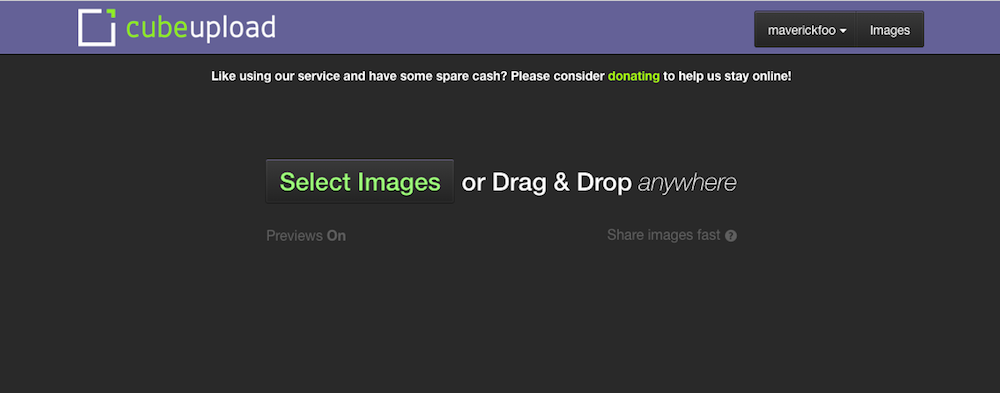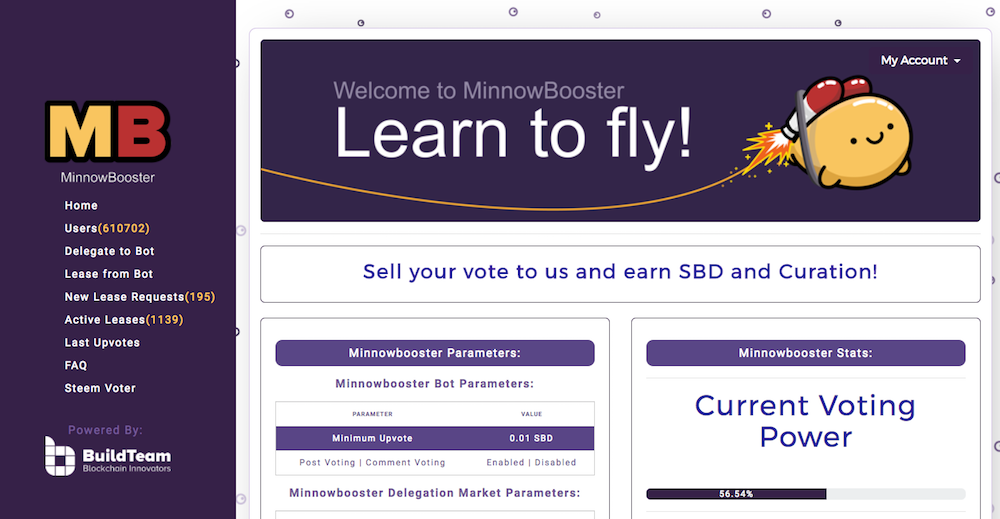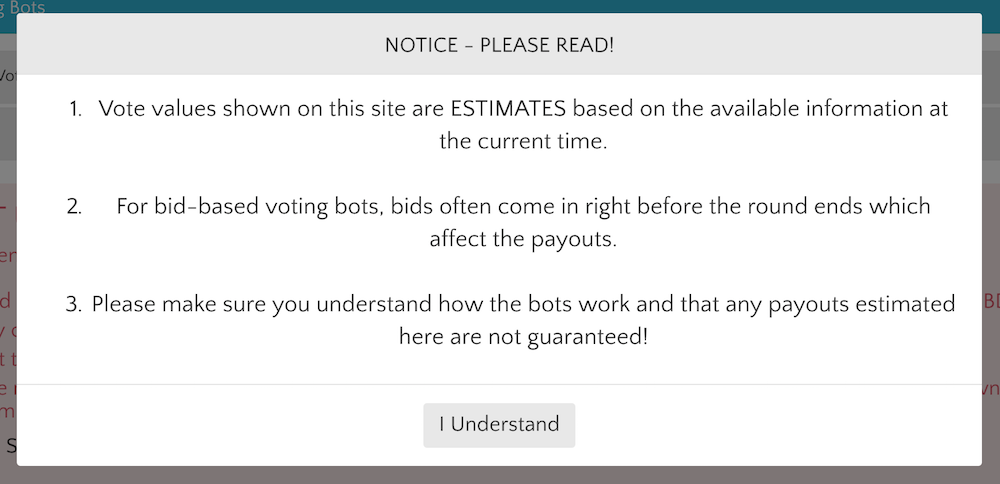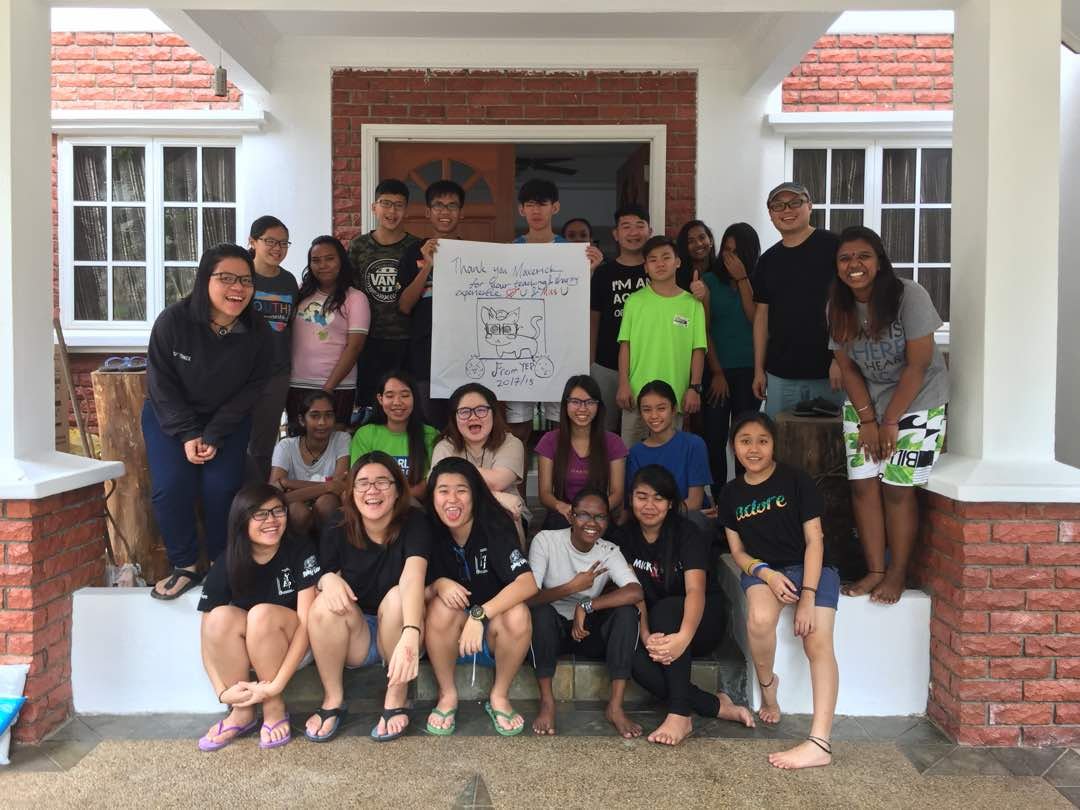
Graduation! Strengths vs. Weaknesses, Character vs. Skills. Hello Steembots!
Contents for Day 9:
- Review of entire program's flow, Q&A
- Discovering Your Strengths and Weaknesses
- When it comes to Character, work on your Weaknesses
- When it comes to Skills, work on your Strengths
- Hello Cubeupload (The Temporary Death of Imgsafe)
- Resteeming Services
- Say hello to the bid bots
Assignments for Day 9:
- Create an animated GIF for post signoffs
- Create a post on your area of interest
Key Learnings:
Can't believe it's graduation day! 9 days of Steemit training! Couldn't believe I managed to pull it off either! Steemit was a new adventure for me, and Q4 2017, I know nuts about blockchain!
We started of with the last piece of "life advice" I would part with them, something unexpected too. Over the past 9 days, I've noticed that while some kids have a better prospect with Steemit (those who are talented in content creation), I realised a few struggled, which probably lead them to copying contents off the web, just for the sake of completing the assignment.
I went around the room, asking if they have ever thought about their strengths and talent. As most of them are unsure what their strengths were (hey, even adults would struggle with this), I decided to come up with a few questions to help them.
They are:
- What do you enjoy doing so much, that you don't mind doing it all the time?
- What do you enjoy doing so much, that you don't mind doing it for free?
- What do your friends and family members always entrust you to do?
- What subjects do you do well in school? What subject do you love the most?
- What do you like reading and learning about?
- What do you talk about all the time?
- What do your closest friends like to do, which you find yourself doing as well?

Then, I went on to explain to them why the school system probably did their strengths and talent a major disfavour.

Example: In a classroom of 40 students, let's say Joe is naturally talented in Math. He's faster than the other kids, not only because he enjoyed the subject, but simply because he finds those mathematical formulas so interesting and natural to him, it's like they are talking to him.
However, as the other 39 students are struggling with the concepts, the teacher asked Joe to slow down. As a matter of fact, Joe slowed down so much that he eventually became mediocre. And just like that, he became an Average Joe.
Now, Joe's classmate, Rose, may be strong in Science, but because of the same system, she, too, eventually became average.
Such is the system in school with high student to teacher ratio.
Then, there is another issue that is a product of the school system.
Let's bring Joe back. He's good at Math, and bad at Chemistry. The school system would prescribe more homework, tuition and extra classes for Joe, on Chemistry. And for his areas of strength, Math, they would do nothing, since he's already good at it.
You see, if Joe's chemistry was a 2 out of 10, because it's his area of weakness, even with the additional help, he will probably get to 4 out of 10. Guess what? 4/10 is still below average.

However, if Joe's Math was a 6 out of 10, and because he enjoyed the subject and was motivated to learn more, he got top 8 out of 10. 8/10 is exceptional!
So I told the kids, always work in their areas of strength, and leverage on others in their areas of weaknesses. That will serve to hone their strengths and skills, and in the process of becoming world class.
However, that should only apply in their areas of skills. When it comes to character, they have to work on their weaknesses and flaws. Bad characters traits like impatience, blame-mentality, non-growth mindset and more needed to be worked and improved on. I try to make sure they are able to differentiate between the two situation.
As there was a problem with Imgsafe.org, I worked with the kids to setup Cubeupload.com.
As the kids are using loaned laptops during the program, I also showed them how to remove cookies, saved passwords and caches for security reasons. Their passkeys for their wallets were saved, and it's critical for them to remove all traces of it.
As some of the kids were asking about bots, I decided that topic to be the last module of the program.
I was quite hesitant at first, especially when it came to Bid Bots, which was operating in the grey zone. On one hand, it can help Steemians to earn more, but then, it's also unhealthy because the bots were not able to determine the quality of the contents. That means a poorly written content can potential earn more that a quality one.
I debated on this, and figured with Google and some resourcefulness, the kids will eventually find out about bid bots anyway. The key is not to censor information from them, but rather for them to make well-informed decisions.
And to make well-informed decisions, they have to be, well, informed.
The first kind of bots we looked at were Resteembots, or resteem services. Compared to bid bots, I personally think resteeming services are a healthier choice. If the kids have written a good piece of content, resteeming it will help them reach out to new community members. This will help them gain new followers and some upvotes, and because the readers are non-bots, the upvotes they get are genuine responses.
Then, we looked at subscription-based upvote services like @qurator, which are generally low cost to maintain. With just a registration fee of SBD2, and regular upvotes of Qurator's contents, the kids will get a small upvote for their contents. However, as the process is automatic, an upvote from Qurator does not necessary mean that the content is good, which I stressed with the kids.
Then, we looked at Bid Bots. I took them through the example of using Minnowbooster and did the ROI calculation with them. Because of the nature of Minnowbooster, the kids were able to work through the numbers and determined if the upvote from Minnobooster was worth the investment.
Lastly, we looked at the other Steem Bid Bots. This is the hardest because of a few reasons:
- Without proper analysis, there is a possibility that the kids may loose their hard-earned SBDs.
- Bots are bots, and they are unable to determine the quality of the contents. Using bid bots to increase the payout does not make the kids better writers. This may discourage them from creating good contents, and take the easy way out and just utilise bid bots.
- Though I am able to make out most of the figures, I wasn't able to calculate the ROI accurately yet. I told the kids as I researched more, I will explain to them in a separate session, should there be a chance.
I guided them to Steembottracker.com, and immediately the kids were overwhelmed by all the numbers, percentages and bots featured on the screen. I went through each of the items, explaining the best that I can.
As the kids had no experience in gambling and bidding (less or just not admitting), I had to think up creative ways to explain bidding rounds, bid amount and total bids. Vote value was easy because it usually correlates with the bots' Steem Power, which the kids were quick to point out that they can refer to Steemnow.com.
Since the home had an uncle who prepares their meals, I decided to use Uncle and pizzas as metaphor. Food always make things easier to understand.

This was what I told the class:
Imagine Uncle cooks a pizza every hour, and there's 20 of you in the class. Say the pizza is cut up to 20 slices, and each slice is $2. The value of the whole pizza is $2 x 20 = $40. Now, say for example, Joe was the only one in the class, and the rest of his friends are away. Joe paid $2 for his slice as usual, but because no one else was around, he get to eat the whole pizza, for a fraction of the price. Yup, Joe just got a pizza worth $40 for only $2, and that's a steal! In the following hour, Rose returned, and both Joe and Rose bought 2 slices of pizzas each, each for $2. Again, none of the other kids were around by the end of the hour, and they decided to split the pizza evenly between both of them. Hey, $2 for $20 worth of pizza is still good!
The time that Uncle took to cook the pizza (an hour) is the bidding round, and the $2 is the bid amount, and if 20 bids were placed, then $40 is the total bid amount. The kids could easily make sense how Joe gets lucky and have a positive ROI, but there weren't sure sure there would be a negative one.
It's then that I asked them to read one of the warning signs on Steembottracker, "For bid-based voting bots, bids often come in right before the round ends which affect the payouts."
Using the previous example, I told the class,
So in the case where Joe was the only one paying $2 for the slice of pizza, and Uncle noticed that the rest of the kids are not paying, he may choose to buy the rest of the 19 slices of pizza, so that Joe will only get the share that he paid for. And Uncle will do so at the last minute, hoping that the other kids will return. That's still fine because Joe still got what he paid for.
Shit happens when, unknown to Uncle, Mary was spying around the corner, noticed there was an opportunity to get a bigger slice of pizza for a low price, decided to buy at the last minute as well. So what happened now is Uncle would have bought 19 pieces, Mary may have bought 3 pieces (thinking she can get a bigger share of the pizza), and together with Joe's one slice, the total amount ordered slices now is 23!
The total size of the pizza remains the same (voting power), which means the pizza now have to be slices into 23 pieces, instead of 20. So Joe is left with a smaller piece than what he originally paid for. Hence the negative ROI.
This is a very simplified way to getting the kids to understand the mechanics of bidding (which I told them I am still not 100% sure how it works), but to my surprised, they were able to understand the concept (phew).
I told the kids, as they were young adults, me teaching them about bid bots is so that they are aware, slightly educated, and enable them to make a better decision should they choose to engage their services. I reminded them that bid bots are no substitute for good contents, and that they may loose more than they put in. Is the risk necessary?
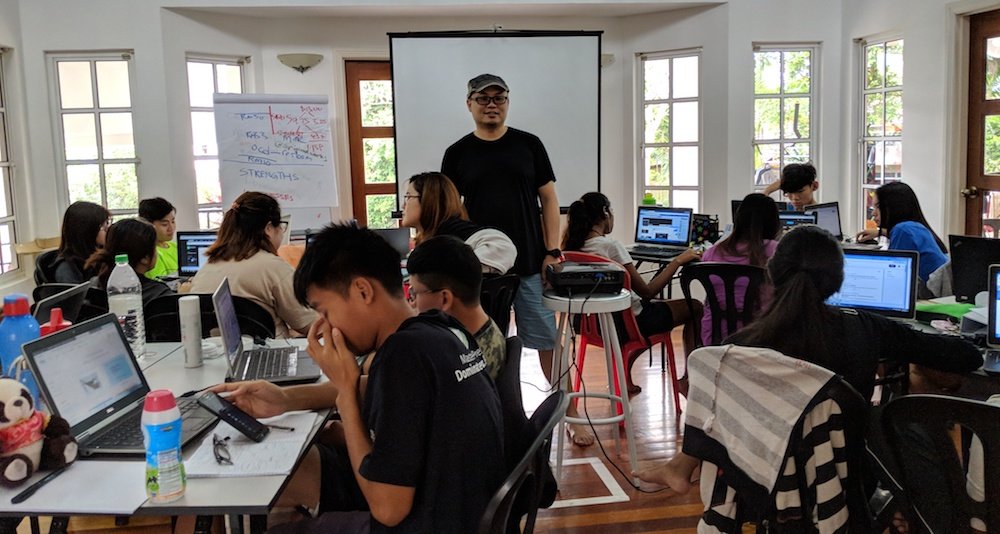
Final Thoughts:
As I drove home today, I reflect on the past 9 days, and how it has changed my life. Not only did it deepened my knowledge around Steemit, the blockchain technology and content writing, it has also refined my delivery skills. Training kids on new technologies is one thing, but doing so with lesser reference points is hard.
You see, with adults, I can make analogous comparisons like banks, transaction fees, emotional writing, click baits, trading and more. But as the kids have lesser experience in those areas, I found myself constantly searching for metaphors and examples familiar to them, to bridge the gap to the new knowledge. It kept me on my toes, constantly be on a look out for their gestures and ways they interface with technology, and to be mindful of breaking down complicated concept into simple, bite-size info. Mind you, I was also twice their age, so pop cultural references were easy either!
All, in all, I think the process of working with the underprivileged kids have humbled me a lot. I am reminded of a conversation I had with my Ma years ago, about my aspirations to be a teacher. My Ma said, as a teacher herself, she can first hand tell me that it would not be an easy life. Combined with the fact that being a male teacher, I might even be sent to rural areas with poorer infrastructure and lesser exposure, before being able to apply for a relocation back to the city. She told me it will be harder to teach these students, as the gap of knowledge was wider when compared to the city kids.
Don't get me wrong. In no way am I comparing the underprivileged kids to those my mom warned me about. But trust me, if she had been around during this Steemit Bootcamp, I would have gone up to her for a pat of encouragement.
And I would like to think that she would give me one, with a proud smile.
Check out the previous post(s) in this Steemit Bootcamp for Underprivileged Kids Series:
- Day Zero | The lead-up and Preparation
- Day One | Introduction to Steemit, the kids' first #Introduceyourself post, and no way a combined SBD133 of upvotes on the very first day!?!!?
- Day Two | Interests, Format & Structure
- Day Three | Grounding and be Grounded
- Day Four | Canvas, Chats, Contests & Courtship
- Day Five | The Stalker Techs of Steemit! And the legendary dreaded question.
- Day Six | Youtube Videos, Google Sites & Discording TeamMalaysia
- Day Seven | Withdrawals, exchanges, marketplaces, 2-Factor Authentications…… it's like a Bank!
- Day Eight | Sexifying your post titles, and the unplanned module on the Attention Prioritisation Formula
Wait, why's Mav posting on Steemit nowadays?
Well, unlike other blogging and social media platform, Steemit is the only platform that allows me to earn cryptocurrency when I engage with it. Yup, one Steem is about USD7, and you, too, can earn Steem Dollars every time you:
- Create content (articles, blog posts, podcasts, videos, photos)
- Upvote (like) other people contents
- Comment on other people's posts
- Have discussions, share opinions etc!
Yup, basically it's the very same thing you're doing on Facebook, Twitter, Instagram etc all along!
The only difference? For once you can earn a nice income on the side!
Sign up for a free Steemit account, and you can thank me by coming back and upvoting this article. And guess what, you will earn Steem too for doing that! #awesome


